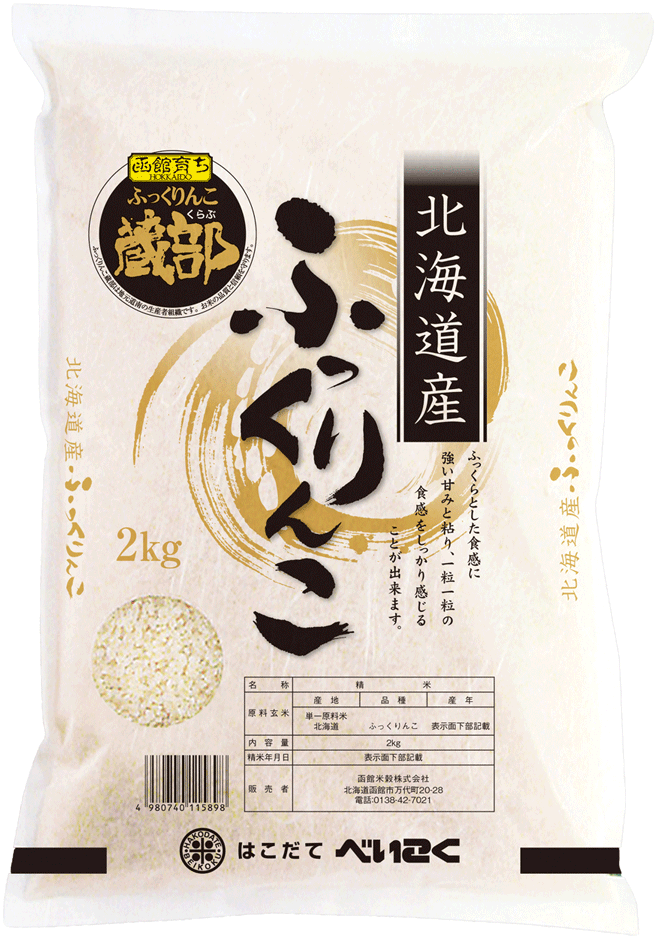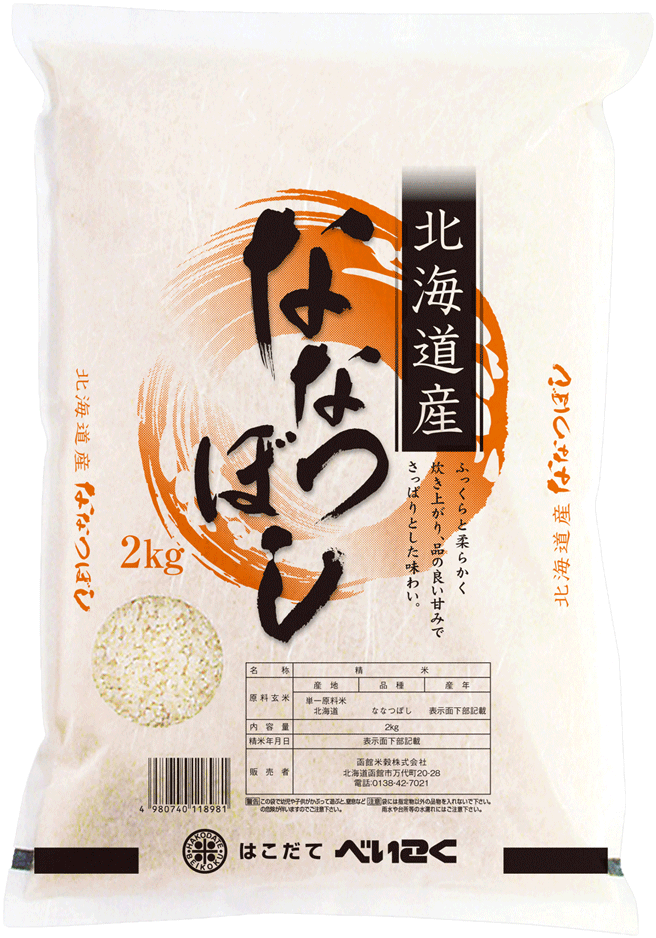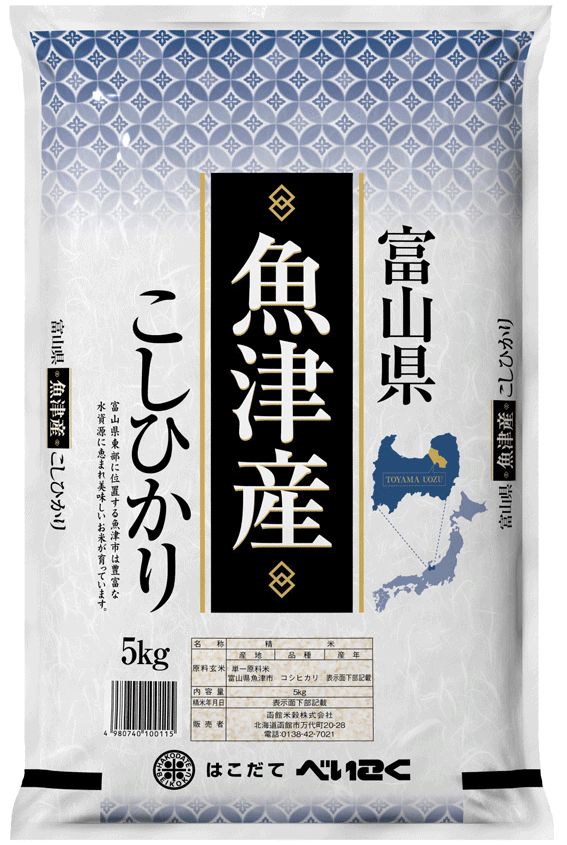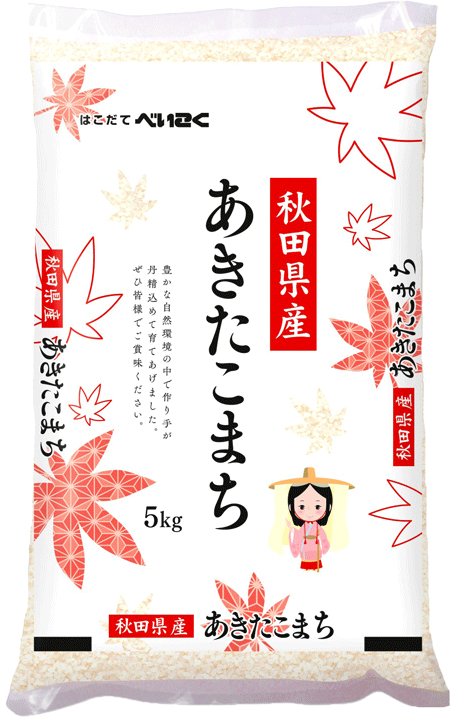Rice
Hokkaido Rice
Yumepirika

|
A rice variety that is moderately sticky and tastes sweet. When boiled, each grain of rice becomes glossy and beautiful . A culmination of rice farmers' efforts of breed improvement. It was ranked the highest "special A" in the rice evaluation program for the 2023 harvest for 14 years in a row. A rice variety with a rich sweetness and a strong flavor. Its stickiness level is among the highest of all rice varieties grown in Hokkaido. | Fukkurinko

|
Fukkurinko is a rice variety developed in southern Hokkaido, characterized by its sweetish taste and a soft texture. To ensure high quality, strict standards on cultivation, production, shipment and quality have been established. This rice goes great with fish dishes and also in onigiri and other Japanese foods. |
|---|---|---|---|
Nanatsuboshi

|
Nanatsuboshi is the variety with the largest yield of any Hokkaido-grown rice. It cooks up plumply and with a glossy finish, providing a perfect balance of stickiness and sweetness, which is a combination enjoyed by many Japanese consumers. This variety goes well with any type of cuisine. It is also delicious when served cold, making it ideal for sushi. It was ranked the highest "special A" in the rice evaluation program for 14 years in a row. |
Outside Hokkaido Rice
Toyama Koshihikari

|
The Toyama Plain is one of the major rice growing areas of Japan. Toyama is famed for its sweet Koshihikari rice. This rice is also popular with all of Japan. Toyama koshihikari has a unique flavour that is slightly sweeter than other Japanese rice varieties, with a good level of stickiness that makes it suitable for all Japanese cooking needs. Use Toyama Koshihikari to make sushi, or serve with an authentic Japanese curry. | Akita Akitakomachi

|
Akitakomachi rice harvested in the Akita is one of the representative high-class varieties of Japan. It is a sub-type of Koshihikari. There is a luster in every grain, and when boiled, its very appearance stimulates the appetite. It has a chewy texture, is quite hard, and does not lose its taste even when it gets cold, making it ideal for lunch boxes and onigiri rice balls. |
|---|



